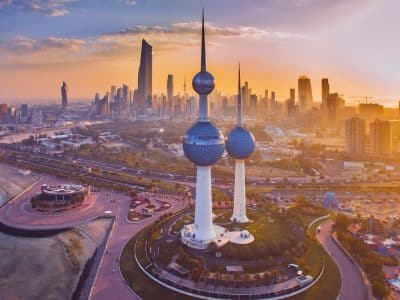The Middle East is leading the way ahead of the rest of the world in the recovery from Covid-19, according to a leading economist.
Second quarter global growth was “stronger than anything we’ve seen in the previous 15 years, including the recovery from the global financial crisis, but there are signs the growth maybe faltering again”, said Scott Livermore, ICAEW economic advisor and chief economist at Oxford Economics.
A global rise in Covid-19 cases, due to the highly contagious delta variant, has caused further disruptions to supply chains and overall economic recovery as individuals are forced to quarantine, stalling work and daily consumer activity. Some economies have put restrictions back in place, further strangling economic activity.
“The Middle East is faring slightly better than the rest of the world. This performance differential largely reflects development related to the delta variant and exposures to supply chain disruptions that are affecting key sectors,” Livermore said.
For highly vaccinated countries, like some in the GCC, the risk of second lockdowns is low, which means the threat of major economic disruption remains low if no new variants that impact vaccine efficacy arise.
Globally, Livermore said industrial production has proved flat for most of this year, even though demand and new orders continue to rise. Rather than produce, firms are dipping into existing inventory.
“Reserve stocks are significantly below what they would expect given the number of orders. That’s creating bottlenecks across some sectors,” Livermore said. “These supply constraints are really weighing on the economic recovery. It’s not clear how long these supply chain shortages will last. It’s partly going to depend on how effective we are with dealing with Covid-19, but it also takes time to ramp up production.”
The global economy is projected to grow 6 percent in 2021, according to International Monetary Fund estimates. Emerging markets, especially in Asia, were downgraded in July, and Livermore said this was “due to the delta variant and the downward revision is much more about delayed recovery rather than foregone recovery and we’ve upgraded 2022 accordingly”.
![]() Scott Livermore, ICAEW economic advisor and chief economist at Oxford Economics.
Scott Livermore, ICAEW economic advisor and chief economist at Oxford Economics.
In the UAE, there is hope economic growth will exceed 4 percent in 2021, a higher rate than the 2.5 percent the central bank predicted in December. Economic growth contracted around 6 percent in 2020, according to estimates from the International Monetary Fund (IMF).
In neighbouring Saudi Arabia, the kingdom’s private sector recovery lagged in the second quarter of 2021, accounting for 48 percent of economic output, compared to nearly 52 percent in the previous three-month period, a statement from the General Authority for Statistics said.
The longer the crisis goes on, the greater the economic scarring and the greater the challenge it will be for businesses to recover. Compounded with increasing climate change challenges, the global economy, and those in the Middle East that are particularly susceptible to climate change, need to be prepared to deal with potential new variants and inevitable warming temperatures.
Latin America, Africa, Southeast Asia, and the Middle East, are expected to experience the largest decline in GDP growth from rising temperatures, and in the Middle East and Asia, the cost of dealing with climate change is the highest.
“Not only are [these regions], the most vulnerable, we also have to face the highest bill in facing climate change,” Livermore said.
There are some bright spots, though. While some of these countries have been slower to adopt renewable energy, they’re actively looking to work more green energy into the mix. The UAE has said it will double the share of clean energy (from 25 percent to 50 percent) in the total energy mix by the year 2050.
![]() The UAE has said it will double the share of clean energy (from 25 percent to 50 percent) in the total energy mix by the year 2050.
The UAE has said it will double the share of clean energy (from 25 percent to 50 percent) in the total energy mix by the year 2050.
In the GCC, countries like Saudi Arabia and the UAE have invested heavily in green technology, and sustainable energy projects are on the rise. The International Renewable Energy Agency (IRENA) predicts that the GCC region can cut its annual water use by 16 percent, save 400 million barrels of oil, create close to 210,000 jobs and reduce its per capita carbon footprint by eight percent in 2030 – all by achieving the renewable energy targets that have already been set by the various national and sub-national governments.
To make the green economy a reality, more needs to be invested in research and development, which Livermore said the GCC is taking good strides to do.
“Traditionally, the Middle East fares less well, but the UAE, Saudi Arabia, Qatar are really focused on improving their universities and improving their R&D base, and there should be a good pipeline in this regard coming forward,” he said.





